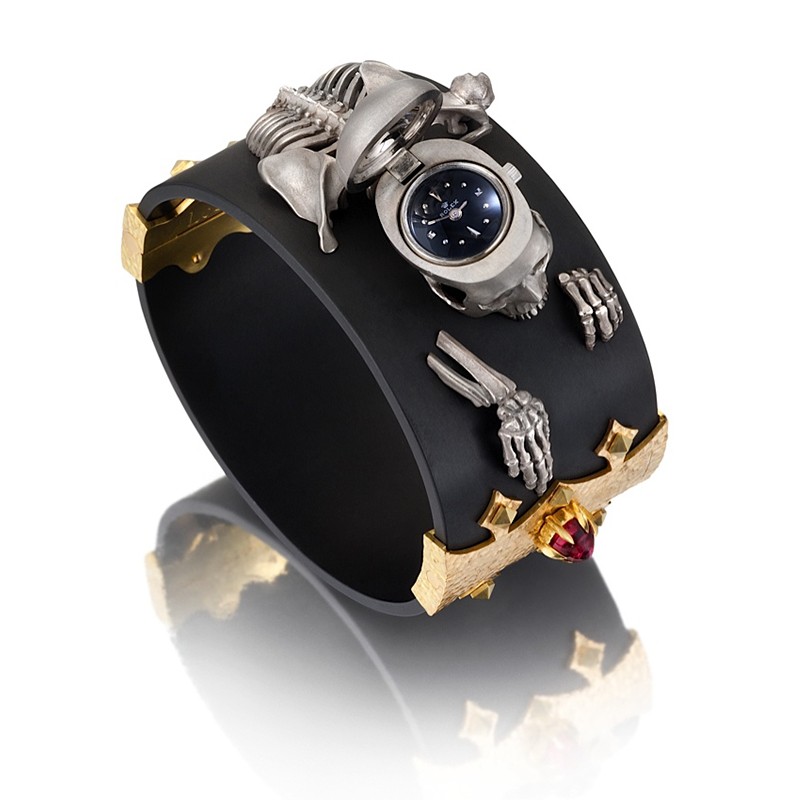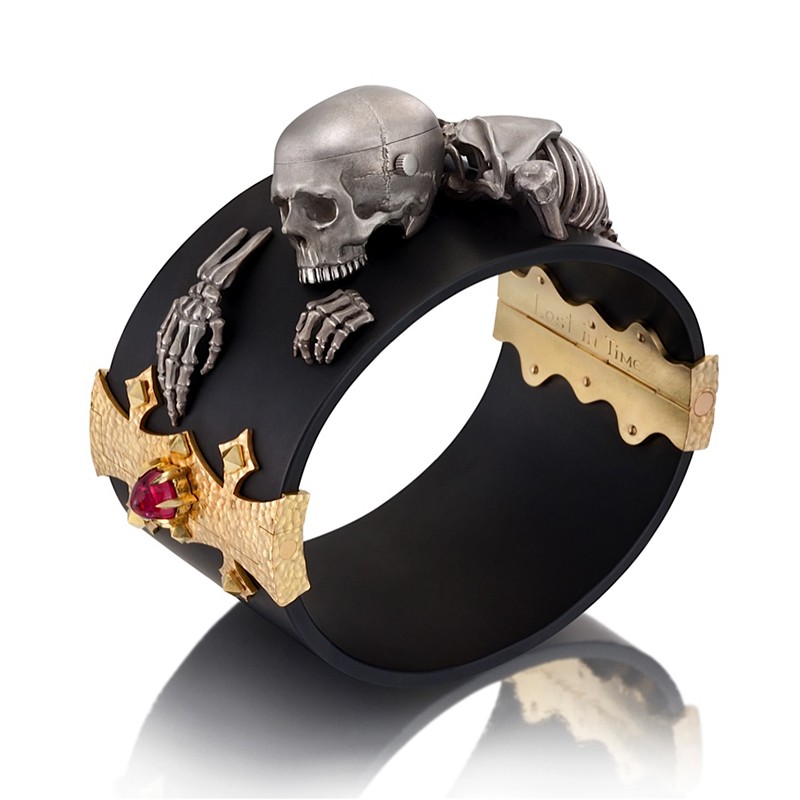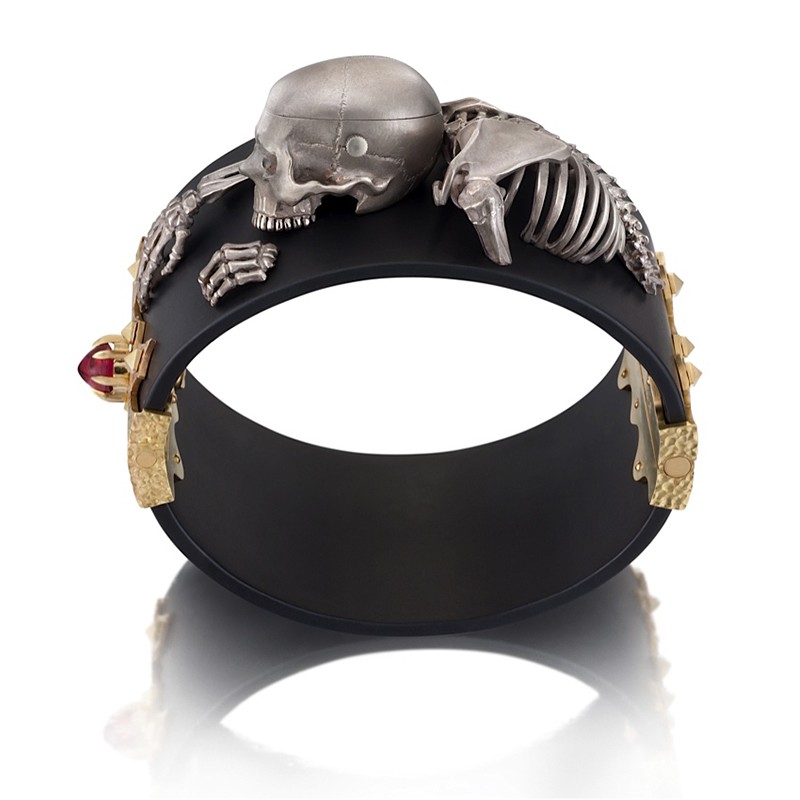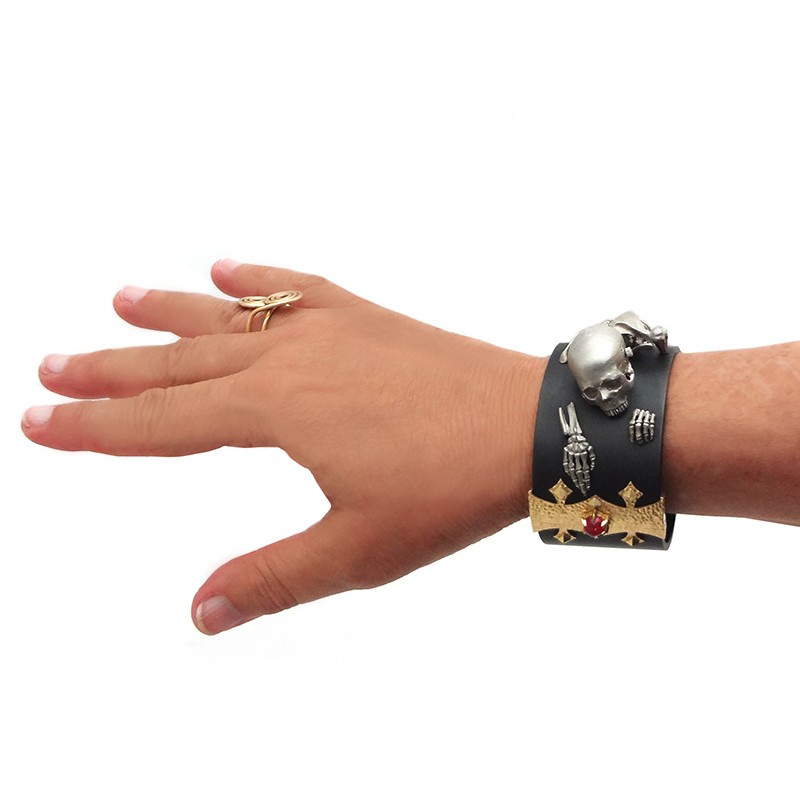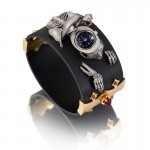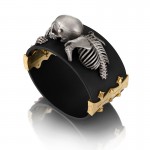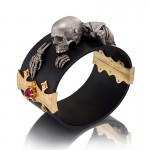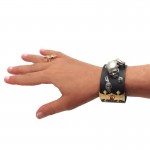“This piece represents the culmination of a life-long desire to illustrate my fascination with human drama and frailty in the face of the ravages of time. The narrative is one of a writhing skeleton emerging from a dark void, the ashes of the past, caught in the striving for purpose. A major inspiration for the bracelet’s scheme was the dramatic emerging remains of the victims in Herculaneum from the Mount Vesuvius eruption of 79 AD.
“The discovery of the smallest Rolex watch movement (now out-of-production) determined the bracelet’s anatomical proportions. The next task was to find a source of low-carbon iron, ideal for its durability and jet-black patina. The search led me to a Japanese ironmonger, who provided an ingot derived from the Tsuba (hand guard) of a Samurai sword (Tamahagane.) After forging, shaping and refining the iron into the bracelet’s oval, I achieved the rustproof jet-black patina (urushi finish) by using Ohaguro, an ancient formula developed by Japanese artisans.
“I then attached the Victorian funeral-like hinge and clasp, fabricated from 18-karat yellow gold, to the iron with pyramid-shaped rivets. Composed of 22 parts, the clasp is of a unique design, featuring a white gold double-spring mechanism, activated by the turning of a high-domed cabochon Rubellite Tourmaline. I sculpted the skeleton out of white gold and fastened it to the iron with hidden rivets. Finally, I attached the skull to the iron with gold screws, enabling access to the watch movement for servicing. Applying pressure to the forehead and temples moves a fulcrum-leveraged hinge, which reveals the skull’s contents.”
To purchase or to request more information, please email us at mobiliagallery@gmail.com.
| Materials | 18K & 14K gold, Rolex watch, iron, steel, Tamahagane (Japanese metal for sword-making), Rubellite tourmaline, diamonds, urushi finish |
|---|---|
| Dimensions | 3” x 3” x 1.5” |



